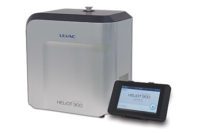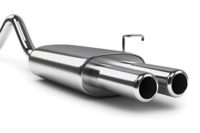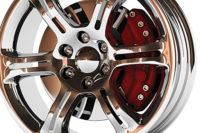There is a broad spectrum of applications for portable helium leak detectors that touches numerous industry market segments. Vacuum systems as well as a wide variety of products and devices require leak testing as part of the quality testing process. Portable leak detectors are of great value, and are indispensable in the following industries:
- Automotive
- Air Conditioning / Heating / Refrigeration
- Semiconductor, and Electrical Components
- Vacuum Equipment Maintenance
- Pharmaceutical
- Packaging
- Aerospace
- Defense
- Energy
- Research and Development
Citing a few examples, in the automotive sector, there are: radiators, evaporators, fuel tanks, fuel caps, and compressors, tire rims, air bag inflators and EGR coolers, all of which require leak testing as part of quality testing. Likewise, in the air conditioning/ heating/refrigeration sector there are: compressors, condensers, heat exchangers, AC indoor and outdoor unit assemblies, pressure control valves, and cooper pipe that all require leak testing. This is just a few examples of an extensive list of products, devices and systems which require leak-tightness.
Tech TipsHelium leak detectors can be operated in three different methods/modes. The first mode is by using the external pressure method on the workpiece. The second is by using an internal method on the workpiece. The third involves employing a “sniffer.” The sniffer method involves pressurizing helium gas inside a workpiece and detecting the presence of helium gas from outside the workpiece. |
Helium leak detectors have been around since the 1950s. They did not go “portable” until the early 1980s, when the semiconductor industry started to ramp up production of integrated circuits. The semiconductor industry started to use vacuum-based systems to manufacture the IC chips. Numerous systems including sputtering systems, CVD systems, evaporation systems, etching systems, ashing systems and ion implant systems are all used in the manufacture of semiconductor devices. The requirement for leak detectors to become both small and portable arose as a result of clean-room wafer fabs that were relatively small but densely packed with vacuum systems. All of which required a high level of leak-tightness. Today, small portable helium leak detectors are used in all of the industries and applications noted above.
When purchasing a portable there are several considerations to be aware of. Helium leak detectors can be operated in three different methods/ modes. The first mode is by using the external pressure method on the workpiece. The second is by using an internal method on the workpiece. The third involves employing a “sniffer.” The sniffer method involves pressurizing helium gas inside a workpiece and detecting the presence of helium gas from outside the workpiece. The portable helium leak detector you are considering should be able to operate in these three methods. A further description of these methods is provided below:
External Pressure Method:
This method involves pumping air out of the workpiece (test object) to create a vacuum, spraying helium gas onto the outside of the workpiece and detecting if helium enters the workpiece with a helium leak detector. Figure 1 depicts the operating schematic for this mode of operation.
Internal Pressure Method:
This method involves injecting helium gas inside the workpiece in a vacuum chamber, pumping out the vacuum chamber to create a vacuum, and then detecting whether helium leaks from the workpiece into the vacuum chamber with a helium leak detector. Figure 2 depicts the operating schematic for this mode of operation.
“Sniffer” Method:
The sniffer method involves pressurizing helium gas inside the workpiece and detecting the presence of helium gas from outside the workpiece. Figure 3 depicts the operating schematic for this mode of operation.
Other Leak Detector Considerations:
Test Flow Modes:
The leak detector should also have the ability to operate at several different inlet pressures, from “ultra-fine” to gross and “sniffer” modes.
High Pumping Speed:
When surveying the market, one of the highest considerations for a helium leak detector is the pumping speed. If a leak is detected, using helium, a fast pumping speed is very desirable, to enable fast clearing (cleanup) of the leak detector unit, which enables rapid moving to the next testing point, or object. The advantage of higher pumping speeds enables the faster detection of the smallest leaks and improves overall leak test quality. Pumping speeds of about 5L/sec (300L/min), are what to look for.
Wireless touch screen control panel:
Very often in the leak testing environment it is desirable for the test operator to be remote from the test object. This is especially convenient for long distance leak testing. A wireless touch screen control panel comes in very handy for this purpose. One should choose a wireless touch screen control panel with a good (and well known) operating system for easy operation.
High Sensitivity:
Sometimes overlooked, but extremely important is the leak detector sensitivity. The sensitivity of the leak detector should be around: 5.0E-13 Pa m3/sec, or 3.7E-12 Torr L/sec, or 5.0E-12 mbar L/s.
Maneuverable Cart Design:
Portability should be key. The cart holding the leak detector should be sturdy, compact, and able to be steered like a supermarket shopping cart.
Easy Maintenance:
The serviceability of the leak detector unit should be easy and not time consuming. No tools should be required to take off external panes for maintenance. Look for thing like the ion source, Pirani gage, air filters, and pump oil which can be easily exchanged.
Backing Pump Options:
The leak detector should be capable of running with several versions (pumping speeds) of both oil rotary, or dry scroll backing pumps.
CONSIDERATIONS THAT COULD BE NICE TO HAVE
High Resolution Color Display:
The wireless touch screen control panel should be in color and of high resolution.
Cart Options:
The cart should have the capability of housing the leak detector and a larger size backing pump, if required and a “low height” option.
Accessories:
The unit should have several accessories available, such as: several sized “sniffer” probe units, oil mist traps for optional oil rotary backing pumps, a controller stylus, or touch pen, a storage box for the touch screen controller and a carrying case for the leak detector unit.
Different gas detection capabilities:
The leak detector unit should have the possibility to detect hydrogen, as well as helium by the vacuum method.
In all of the industries noted above, there is a high degree of component and assembly reliability required. Commensurately, there is also an associated high volume part/work-piece requirement in these industries. Portable helium leak detectors are well suited to quality leak testing for these. Most portable helium leak detectors are in an affordable price range, such that large installations could have multiple leak detectors in operation at the same time. This article has highlighted the best features to look for if you are considering purchasing a portable helium leak detector. Q
David J. Mount is the manager, marketing and business development at ULVAC Technologies Inc. For more information, call (978) 764-3992, email [email protected] or visit www.ulvac.com.






